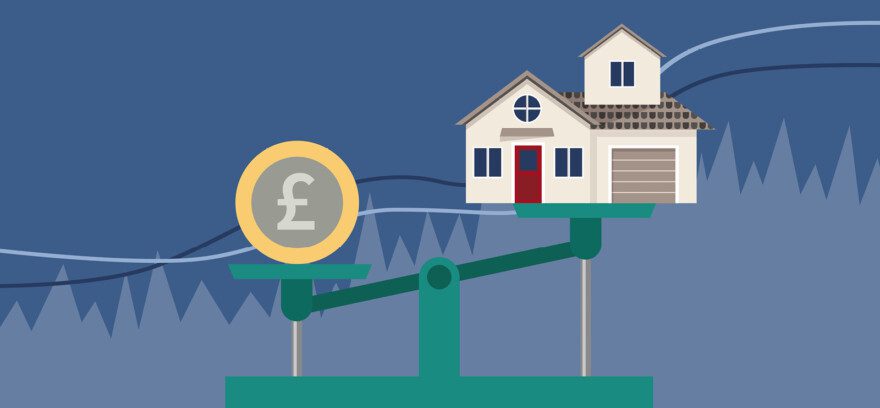UK markets continued to rise this week, with the FTSE 100 Index gaining 0.68% to trade at 8,220 points at the time of writing. The UK is on course for “sluggish” growth that will lag most of its G7 peers, alongside a higher rate of inflation, according to the Organisation for Economic Co-operation and Development (OECD).
GDP will increase by 0.4% in 2024, a softer expansion than any other G7 economy apart from Germany, before growing by 1% in 2025, the OECD said in its economic outlook. The forecasts also stated that inflation will run at 2.7% this year, the highest pace in the group of nations, before receding to 2.3% in 2025.
While the UK is on course to exit a shallow technical recession recorded in the second half of last year, the OECD found that consumers would be held back by sticky services price inflation and a rising tax burden. The OECD also predicted that the Bank of England would start cutting interest rates in the third quarter of this year, taking them from 5.25% to 3.75% by the end of 2025.
This will begin to alleviate the pressure on living standards, however, the organisation warned that households would at the same time see a rising tax burden, heading towards historic highs of 37% of GDP this decade, due to frozen personal income tax thresholds. With UK chancellor Jeremy Hunt hinting at further cuts to personal taxes, the OECD urged the UK to “rebuild fiscal buffers” as it predicted public debt would hover above 100% of GDP in 2025.
UK mortgage approvals hit an 18-month high in March, rising to 61,300 last month from 60,500 in February, according to the Bank of England. Mortgage approvals fell to a low of 39,800 in January 2023, after higher interest rates hit demand. They are now closer to the 2016-2019 monthly average of 66,000, signalling a normalisation in the market, despite a steady rise in home loan costs over recent months.
Despite this, UK house prices unexpectedly fell 0.4% between March and April according to data from lender Nationwide, following a 0.2% drop in March, below the 0.2% expansion forecast by economists. The slowdown is likely to reflect ongoing affordability pressures due to the recent rise in mortgage rates.
Commodity markets
In the commodity markets, Brent crude futures traded around $83 per barrel on Friday and are set for a weekly fall, after US commercial crude inventories surged by 7.3 million barrels to 461 million barrels last week.
Oil prices were also held back due to US economic uncertainty and limited crude supply disruptions caused by the Israel-Hamas war. The fall comes just weeks ahead of the next OPEC+ meeting, led by Russia. Three sources from OPEC+ producers said the group could extend its voluntary oil output cuts of 2.2 million barrels per day beyond June if oil demand fails to pick up but the group has yet to begin formal talks ahead of the June 1st meeting.
Gold traded around $2,300 an ounce on Friday and is set to fall further this week, as investors assessed the prospects of monetary policy easing in the US this year, with the Federal Reserve indicating that the progress on inflation has stalled. The geopolitical risk premium built into the gold price also began to fade, as a renewed push led by Egypt to revive stalled negotiations between Israel and Hamas has raised expectations that a ceasefire agreement could be in sight.
Equity markets
US equity futures rose on Friday amid a boost from Apple’s latest quarterly results, while investors look ahead to the April jobs report. In Thursday’s regular session, the Dow Jones Industrial Average gained 0.85%, the S&P 500 advanced 0.91%, while the Nasdaq Composite soared 1.51%.
The Federal Reserve signalled this week that US borrowing costs are likely to remain higher for longer, as it deals with persistent inflation across the world’s biggest economy. The Federal Open Market Committee said after its meeting on Wednesday that there had been “a lack of further progress” towards its 3% inflation goal in recent months, implying that rate cuts will be delayed until the second half of the year at the earliest.
However, the Federal Reserve did indicate that it was not yet considering new rate rises to counter the recent uptick in inflation, saying that the risks to meeting its joint goals of full employment and subdued price pressures had “moved towards better balance over the past year”. The comments came after the US central bank held interest rate at the 5.25% to 5.5% range on Wednesday, which has been in place since the summer of 2023.
The US economy added 175,000 jobs in April, well below forecasts of a 241,000 rise in a Bloomberg poll and the smallest rise for six months, as the labour market cools in the world’s largest economy. Investors responded to the data by bringing forward expectations for when the Federal Reserve’s first interest rate cut this year might happen to September, from November before the data. US unemployment rose slightly to 3.9%, compared with estimates of 3.8%. Friday’s figures also represented the slowest pace of monthly job growth since October 2023.
The information provided in this communication is not advice or a personal recommendation, and you should not make any investment decisions on the basis of it. If you are unsure of whether an investment is right for you, please seek advice. If you choose to invest, your capital may be at risk and the value of an investment may fall as well as rise in value, so you could get back less than you originally invested.
